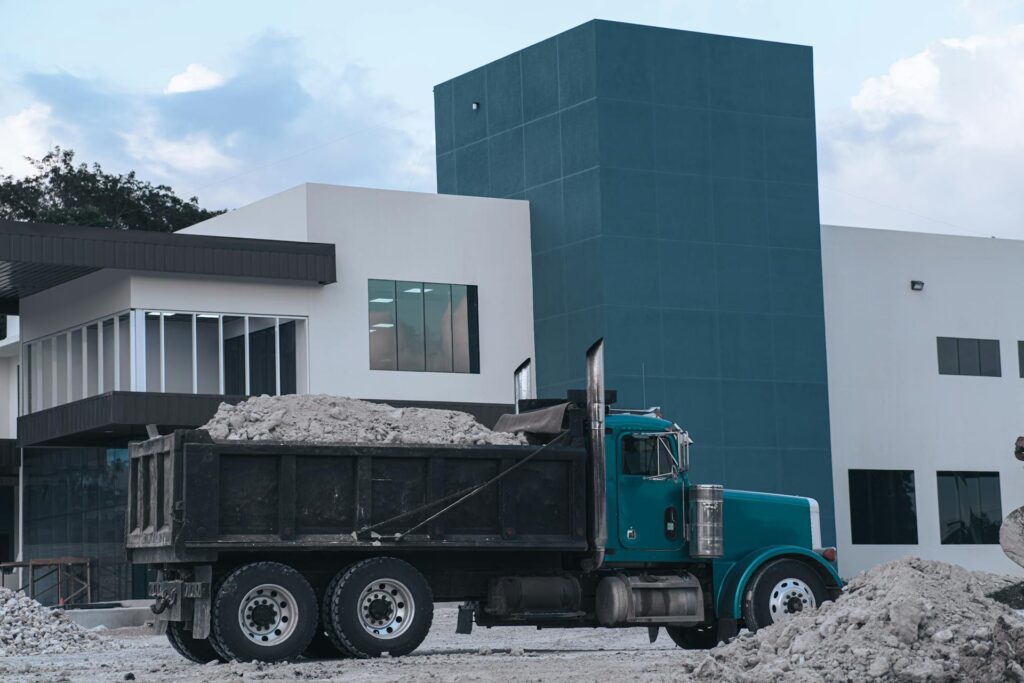
Urban development is a complex and expensive process, where even small delays can mean big losses. This is why efficient commercial fleet vehicles are crucial for ensuring timely delivery of materials and equipment and keeping projects on track.
But let’s face it, keeping a fleet in top shape in an urban environment is no walk in the park; from navigating congested streets to dealing with frequent breakdowns, the challenges are numerous and demanding.
Thankfully, there are also numerous solutions available to help you stay ahead of the curve.
Frequent Breakdowns
Frequent breakdowns are one of the most common yet expensive challenges in fleet management. This is because each breakdown not only halts operations but also incurs additional costs for towing, repairs, and sometimes even rental vehicles to keep the project moving. Mechanical failures can arise from various factors such as neglecting regular maintenance, using substandard parts, or simply from the wear and tear that comes with heavy urban use.
Solution: Predictive Maintenance
Predictive maintenance involves using advanced technologies like IoT devices and sensors to monitor the health of your fleet in real-time. These devices can keep tabs on things like engine temperature, oil levels, and tire pressure, giving you early warnings of potential issues. Regular software updates enhance these predictive capabilities, making it easier to schedule maintenance before a component fails.
Spare Parts Management
Having the right spare parts readily available is critical for minimizing downtime and keeping your fleet running smoothly because delays in getting parts can extend repair times unnecessarily, and lead to increased costs and project delays.
If possible, opt for popular brands as they have the advantage of readily available parts, which can ease some of these concerns. For example, Kenworth truck parts are popular and can be sourced quickly, which can help your fleet get back on the road with minimal delay.
Solution: Optimal Spare Part Strategies
Create a robust spare parts inventory system by using historical data to predict which parts are most likely to fail and stocking those accordingly. Consider partnerships with reliable suppliers to ensure quick access to needed components. Bulk purchasing agreements can also be beneficial, as they can reduce your costs, plus when you buy in bulk, you always have parts available.
Fuel Inefficiency
Fuel costs eat into your budget significantly. And in urban environments, frequent stops, idling in traffic, and suboptimal routes can further exacerbate fuel consumption. Avoiding poor fuel efficiency is important not only because of high costs but also because it contributes to higher emissions, which is a growing concern in cities focused on reducing their carbon footprint.
Solution: Fuel Management Software
Investing in fuel management software can address fuel inefficiency. These systems track fuel usage in real-time, providing insights into consumption patterns and identifying inefficiencies. By analyzing this data, you can optimize routes to reduce idling time and fuel consumption. As a bonus, these systems can monitor driver behavior, offering training opportunities to improve driving habits, such as reducing harsh acceleration and braking, which can significantly impact fuel efficiency.
Downtime Management
Unexpected downtime is a fleet manager’s worst nightmare. Every hour a vehicle is off the road can lead to delays in project timelines, additional labor costs, and penalties for not meeting contractual deadlines.
Solution: Scheduled Downtime
Proactively scheduling downtime for maintenance during off-peak hours or slower periods in your project timeline can minimize its impact. This approach ensures that your vehicles receive the necessary attention without disrupting operations.
Keeping a rotating schedule where different vehicles are serviced at different times is also recommended because this prevents the entire fleet from being out of commission simultaneously.
Additionally, consider having a backup plan, such as rental agreements or standby vehicles, to further mitigate the effects of downtime.
Driver Issues
Drivers are on the front line of fleet management because their driving habits directly impact vehicle health, fuel efficiency, and overall fleet performance. Needless to say, poor driving practices can lead to increased wear and tear, higher fuel consumption, and a higher likelihood of accidents.
Solution: Driver Training Programs
Implementing comprehensive driver training programs is essential. These programs should cover efficient driving techniques, proper vehicle handling, and the importance of regular checks. And then, using telematics, you can monitor driver behavior in real-time and provide immediate feedback. This technology can track metrics like speed, braking patterns, and idling time, helping to identify areas for improvement.
Environmental Considerations
Practically all urban development projects, regardless of geography, face increasing pressure to meet environmental regulations. Reducing emissions and adopting sustainable practices are not just regulatory requirements but also contribute to a company’s reputation and long-term viability.
Solution: Hybrid and Electric Vehicles
Integrating hybrid and electric vehicles into your fleet is highly recommended at this point in time. While the initial investment may be higher, the long-term benefits include reduced fuel costs, lower maintenance requirements, and compliance with stringent emissions regulations.
Also, many urban areas offer incentives for adopting greener technologies, which can offset some of the upfront costs.
Conclusion
Maintaining a commercial fleet for urban development is no small feat. But by taking advantage of various tech solutions and adopting strategic maintenance practices, you can keep your fleet running smoothly and your projects on track while reducing your costs and enhancing your sustainability.
































